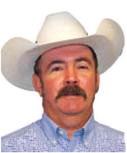Last week’s article discussed the types and amounts of nutrients that may be in a bag of fertilizer.
This week we will talk about the importance of those nutrients. Just like you and I, plants require nutrients or food to survive and perform. Plants require various nutrients at various levelsthere are primary nutrients, secondary nutrients, and micronutrients. The primary nutrients consist of Nitrogen (N), Phosphates (P), and Potassium (K) or Potash.
These major nutrients usually are lacking from the soil first because plants use large amounts for their growth and survival.
Secondary nutrients are Calcium, Magnesium, and Sulphur- there are usually enough of these nutrients in the soil, so fertilization is not always needed. And finally, the micronutrients which include a host of nutrients like Iron, Zinc, Copper, and so forth, are essential for plant growth and are needed in only very small (micro) quantities. Often, these are provided by organic matter.
Today we will focus on nitrogen. While N, P, and K are the main nutrients required for photosynthesis and plant growth, nitrogen is the fuel that promotes plant growth. It is usually the first limiting factor for high growth in agriculture crops and is primarily responsible for vegetative plant growth. You can purchase nitrogen in several forms. Anhydrous Ammonia (62-0-0) is usually the cheapest form, but it comes in the form of a gas or liquid under high pressure.
As a result, it must be injected into the soil. Most other nitrogen sources are made from anhydrous ammonia. Urea (46-0-0) is another nitrogen source, but it can be subject to volatilization under certain conditions when surfaced applied. Ammonia Nitrate (34-0-0) is an excellent form of nitrogen; it has excellent plant agronomic properties, and loss to volatilization is low. However, it is becoming harder to acquire due to its classification as a hazardous material. Ammonia Sulfate (21-0-0) has low potential loss to volatilization. It is a slower-release fertilizer, making it ideal for lawn applications. It is more attainable than ammonia nitrate. It is also an excellent source of Sulphur which is one of the important secondary nutrients needed.
Finally, we have Urea Ammonia Nitrate (UAN) (32-0-0). This is a liquid fertilizer that contains ½ urea and ½ ammonia nitrate. The urea portion is subject to volatilization but is overall a very good agricultural fertilizer. However, it can cause burning if applied to foliage in warm weather.
As an example of the importance of nitrogen on forage production please consider the following information from the Texas A&M publication “Forage Bermudagrass.” As the rate of nitrogen increases, the percent crude protein and yield increase dramatically, while the amount of water used to produce a ton of forage goes down. With low nitrogen rates, a high of 17.6 inches of water is needed to produce a ton of dry matter. With adequate nitrogen, only 3.9 inches of water is needed to produce a ton of dry matter. Adequate nitrogen fertility is necessary to fully utilize the amount of water received by a crop. Water without some amount of fertility will not produce new plant tissue. Nitrogen usage rates vary by crop, but if we use bermudagrass as an example, for every ton of dry matter bermudagrass forage produced, the bermudagrass must absorb 50 units of nitrogen. Certainly, nitrogen is important, but it cannot do its job if P and K are deficient.
The Comanche, Erath, and Hamilton County AgriLife Extension offices will be hosting our annual DOPA training for dairy producers on Tuesday, April 2 nd at the Texas A&M AgriLife Research and Extension Center in Stephenville. The program will be broken into two sessions.
Registration for the morning session will begin at 9:30 AM and the program will run until lunch.
The second session will begin at 1:00 PM and run until 4:00 PM.
In the morning session, we will have Riley Hillard with Comanche County Electric Cooperative, talking about Feasibility and Economics of Solar Panels on Central Texas Dairies.” We will also have Dr. Sonja Swiger covering “ Fly Management on Calf Ranches and in Calf Hutches.”
After lunch, we will have Dr. Scott Nolte talking about “Manure to Compost, Herbicide Residuals,” Dr. Zong Liu talking about “Manure Management,” and Darren Turley will be giving an update on all things dairy and manure.
This will be a very good program and it will offer 5 DOPA credits. The meal will be provided by our great local dairy industry sponsors.

